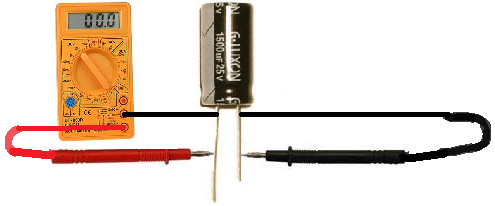Three capacitor defects are detectable with an ohmmeter are short, open and partial short. If the capacitor is in a ciruit, it must be separated by disconnecting one lead. The shorted capacitor has a dilectric breakdown. When this condition is there, the ohmmeter will show a steady-zero reading. All capacitor tests should be made on the highest resistance range of the ohmmeter. Make all tests with current in both directions. Connect the leads in a selected manner for one test, reverse the leads and test again. This double test will prevent erroneous indications from partially charged capacitors.
The most common reason for an open capacitor is broken internal connections. When checked with an ohmmeter, the open capacitor will cause a steady reading of infinity. Remember that every small capacitor charges so fast that some ohmmeter needles will not have time to react.
The partial short is a condition of excessive voltage. This comdition will cause a definite resistance reading on the ohmmeter. Remember that the electrolytic capacitor is supposed to allow some leakage and will normally cause a resistance indication. Also remember that current through an electrolytic capacitor in the wrong direction will destroy the capacitor. When checking the electrolytic capacitor, observe polarity and do not reverse the ohmmeter leads.
When a good capacitor is kept between the leads of an ohmmeter, the needle will swing from zero to infinity as capacitor charges. The speed of needle movement will be determined by the size of the capacitor. After the capacitor is charged, the reading will hold steadily on infinity.

